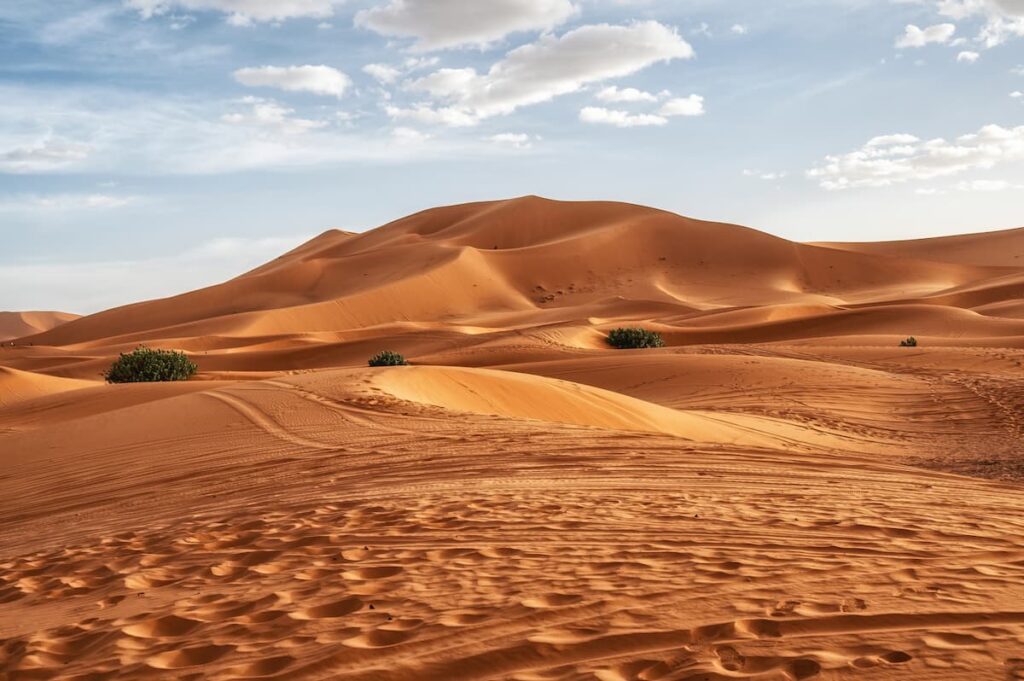Tassili n’Ajjer and new policies put Algeria on the tourism map.
In the heart of the Algerian Sahara, one of the most remote and captivating regions on Earth is finally opening its doors to international visitors. Tassili n’Ajjer National Park — a vast, rocky wilderness filled with prehistoric art, desert silence, and spiritual depth — has long been inaccessible to most travelers. That is rapidly changing.
Thanks to new visa policies and government investment, Algeria is embracing tourism like never before. In 2023, the country saw a record 3.3 million visitors, including 2.2 million foreigners. With a goal of reaching 12 million tourists by 2030, Algeria is undertaking a bold effort to position the Sahara not just as a landscape, but as a life-changing destination.
A New Path for Visitors
Previously known for its bureaucratic hurdles, Algeria began easing access for travelers in 2023. The government introduced visa-on-arrival options for visitors to the Sahara, and launched new direct international flights, including a key route from Paris to Djanet, an oasis town in the southeast near Tassili n’Ajjer.
Tour companies like Touareg Voyages now guide small groups on week-long treks across this expansive UNESCO World Heritage Site. The journeys are both physically demanding and deeply rewarding: more than 75 miles of hiking across a plateau dotted with ancient rock formations, carvings, and fossil sites, accompanied by donkeys, local guides, and the absence of modern comforts.
Yet for many, that’s the appeal. “It’s all about the journey,” read the shirts worn by a group of tourists led by veteran guide Baba Atanof. “In the desert, you have more time… with yourself, with your mind,” adds fellow guide Sidi Baika, a Touareg and atmospheric scientist who calls the experience a return to his “primitive life.”
Culture Carved in Stone
Tassili n’Ajjer is unlike anywhere else. With more than 15,000 rock paintings and engravings — some dating back to 10,000 BCE — the park is often referred to as the world’s largest open-air museum. Tourists witness artistic records of life thousands of years ago, from dancing humans to giraffes and camels, each style reflecting a different historical period.
The rock art spans five chronological stages, including Kel Essuf, Round Head, Bovidian, Caballine, and Cameline. These carvings and paintings aren’t just decorative; they reflect a complex and evolving Saharan civilization.
In addition to rock art, guides point out fossilized remains, natural pigments used for “make-up,” and medicinal plants still used today. One remote area, Sefar — meaning “medicine” in the Tamahaq language — reflects the enduring knowledge of the Touareg people, who have lived in this landscape for generations.
Desert Life and Peace of Mind
Tourists quickly adapt to desert rhythms: healthy food, no alcohol, no internet. Each night, meals end with traditional Touareg tea, served in three rounds: “hard like life,” “sweet like love,” and “light like death.” Around the fire, stories are shared — about jinn, Touareg legends, and the stars above.
With temperatures dropping at night, blankets are pulled close and the silence of the Sahara takes over, broken only by prayers or the return of donkeys at sunrise. The simple life reveals new dimensions of beauty: the sound of wind in tents, the patterns of light on sand, and the awe of nature untouched by urban noise.
For Baika, this return to simplicity is healing. “The people who live in the desert have good health,” he says. “It’s a really magical place. Every time you travel there, you discover something new.”
Looking Beyond the Dunes
While the Sahara covers 83% of Algeria, the country also offers Mediterranean coastlines, Roman ruins, vineyards, and mountains. Yet it’s the southern desert that defines Algeria’s most dramatic tourism shift. The government has made border security a priority, signing new customs agreements with Libya and bolstering control along its vast frontiers.
Efforts are underway to expand infrastructure, increase hotel capacity, and improve connections with European capitals. The Tourism Development Master Plan 2030 aims to make Algeria not just a destination, but a sustainable engine of economic growth.
From prehistoric carvings to ancient cypress trees, Tassili n’Ajjer offers more than scenery — it offers perspective. Atop a 300-foot dune, a visitor says simply, “Salam alaikum.” In the desert, every word, every silence, and every step carries weight. For many travelers, that is the essence of true tourism: discovery not just of place, but of self.


